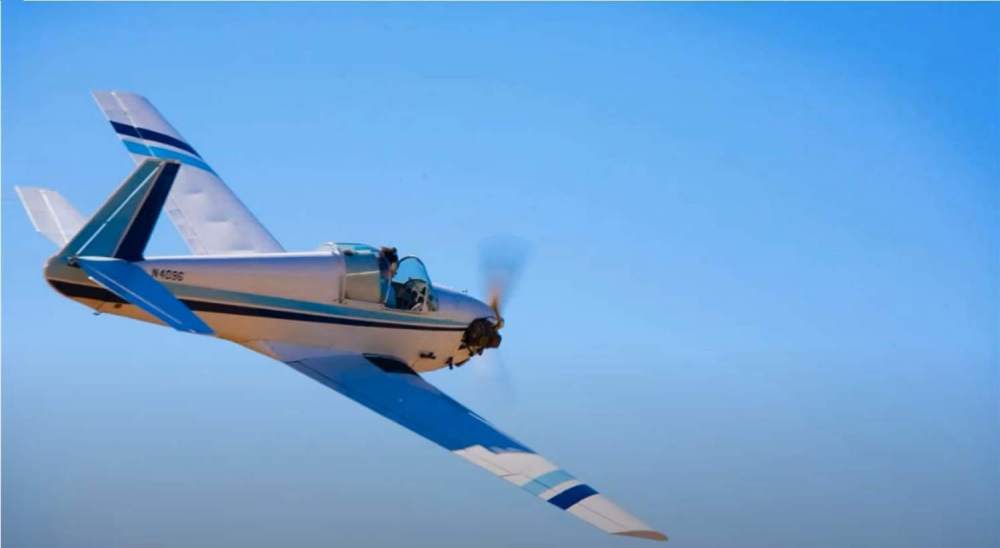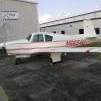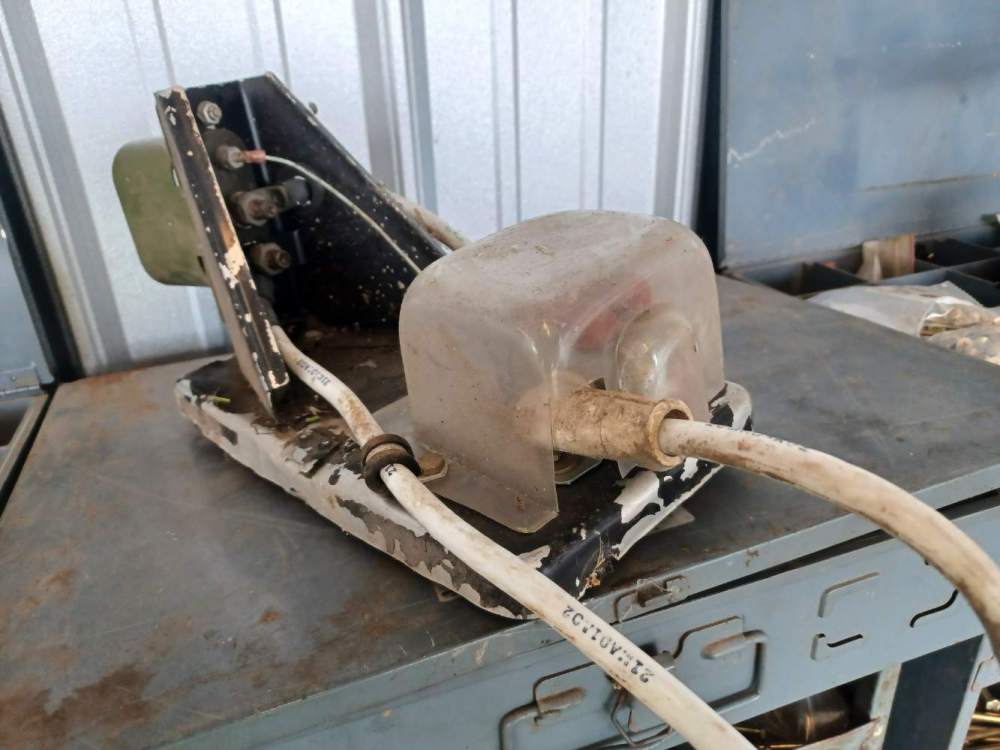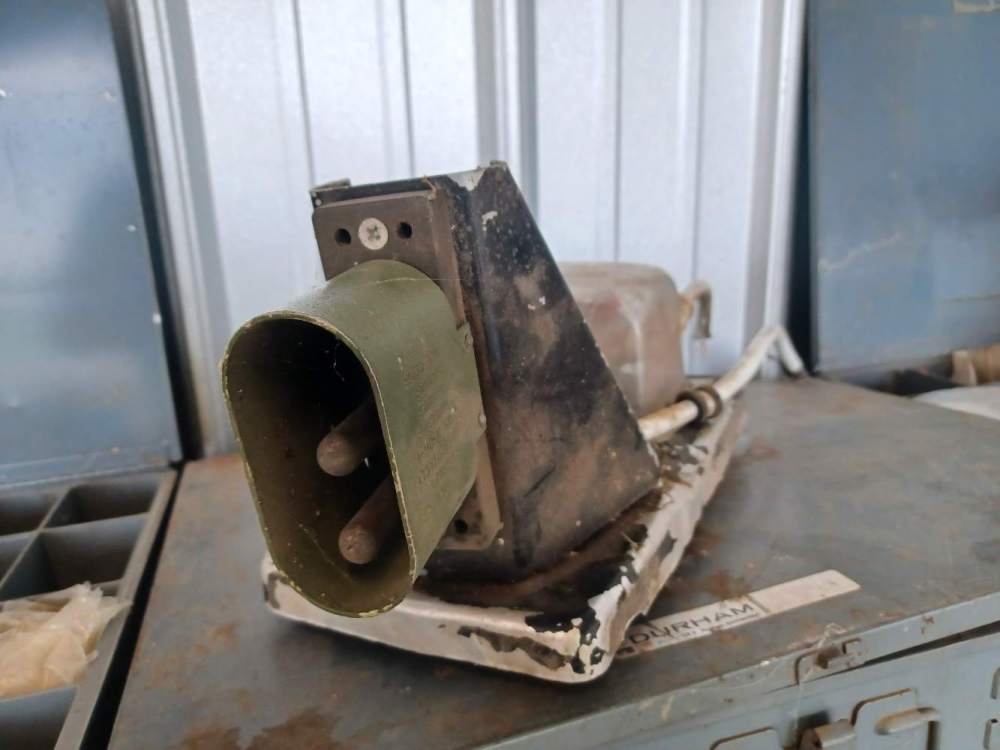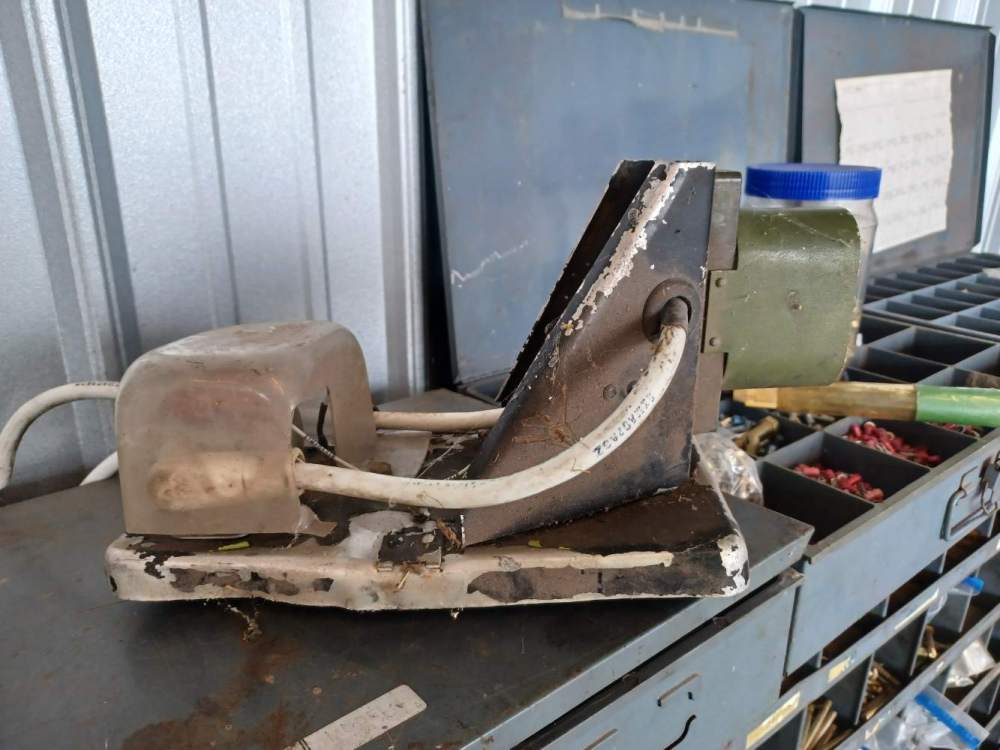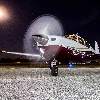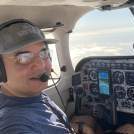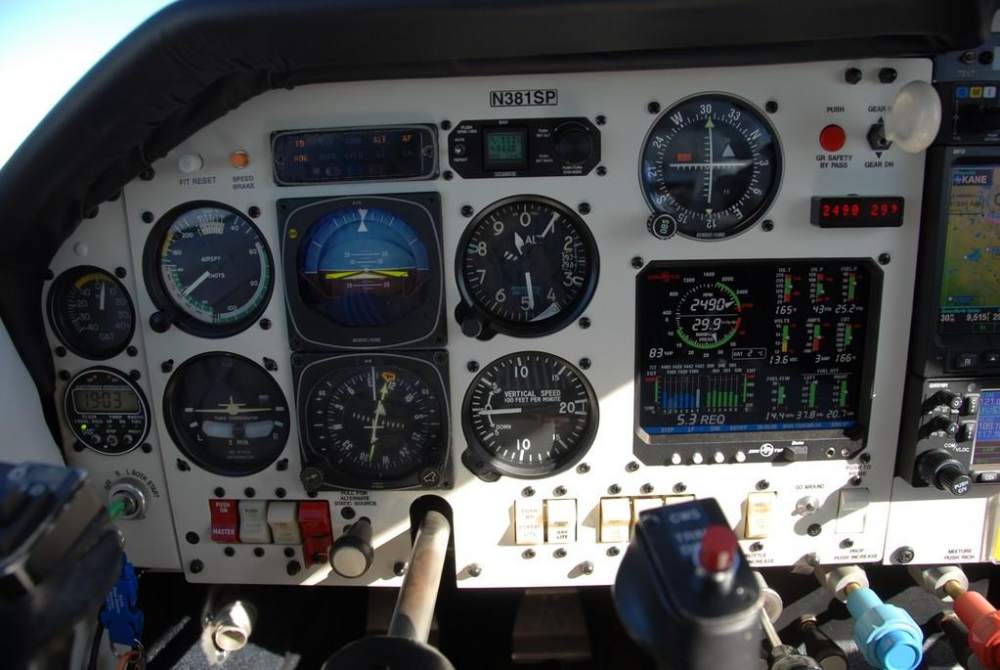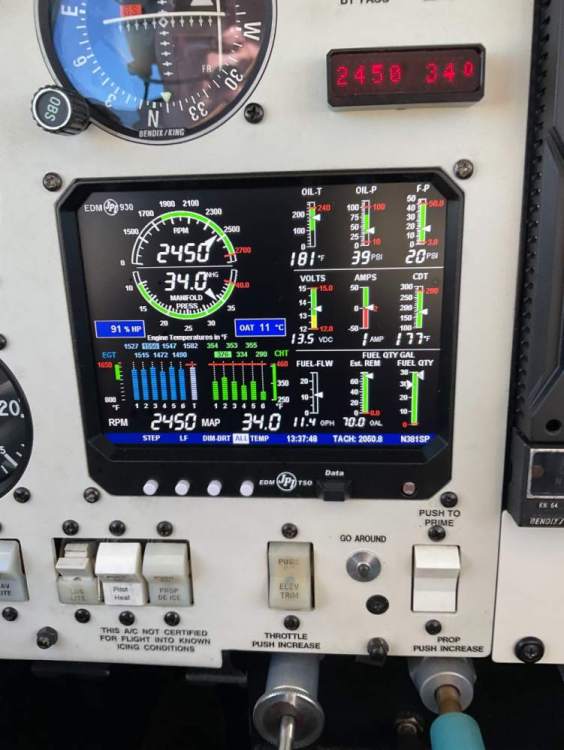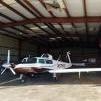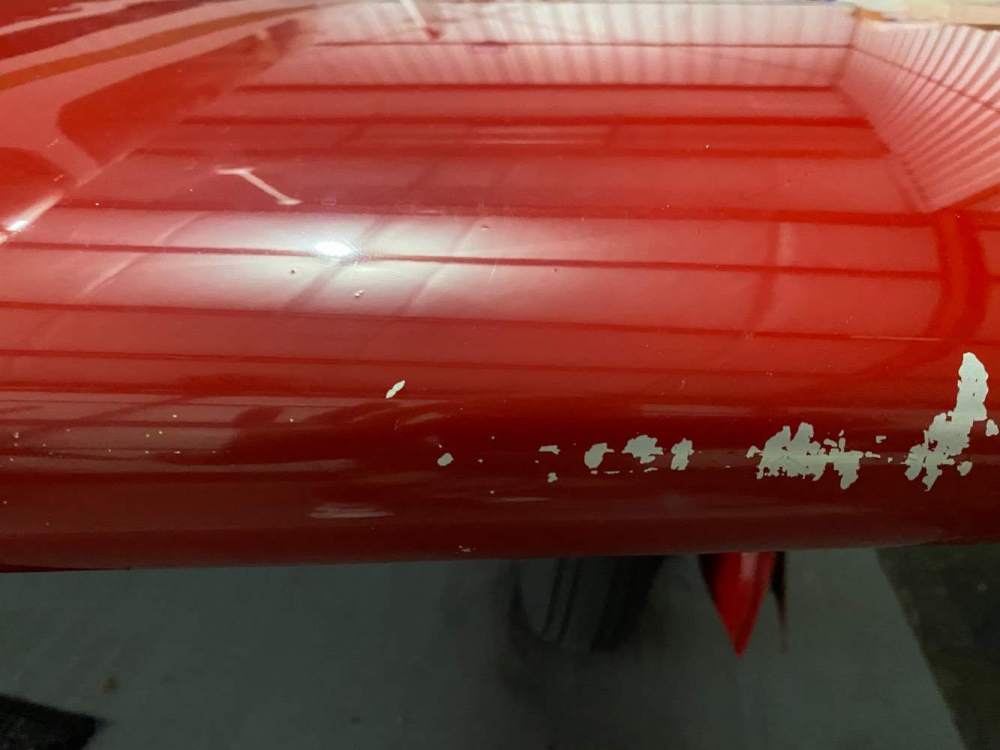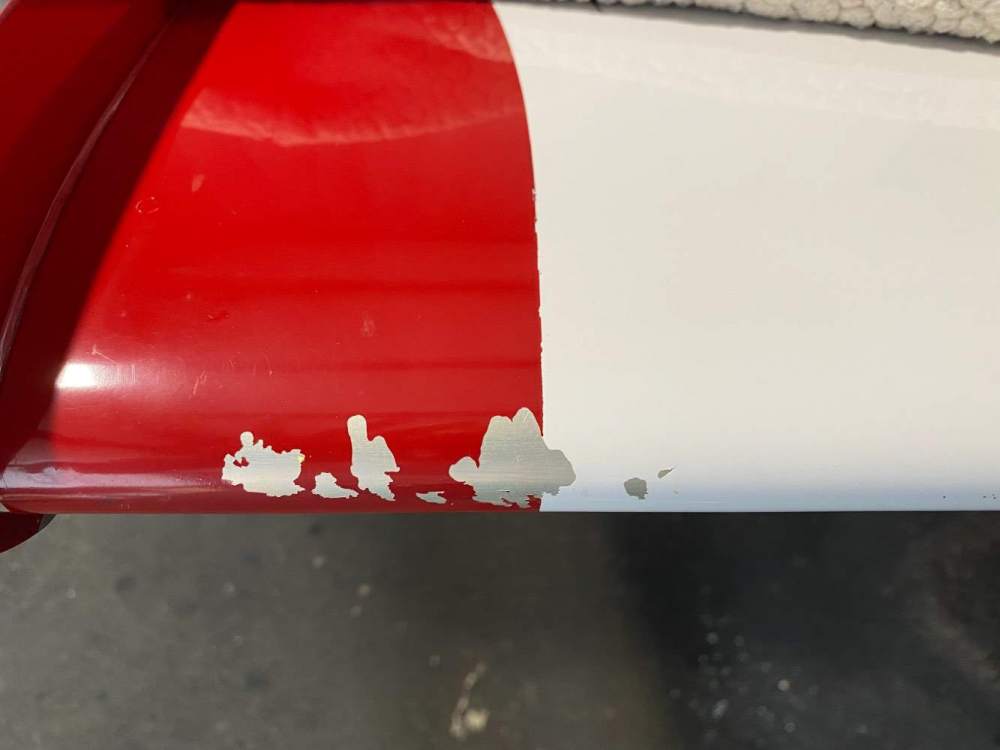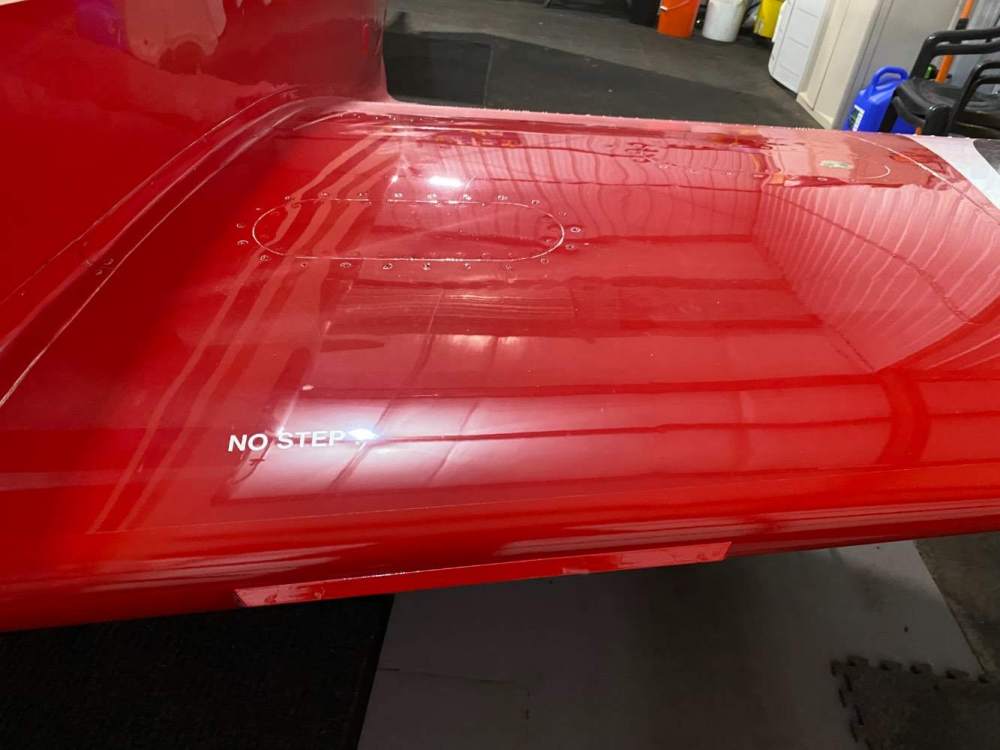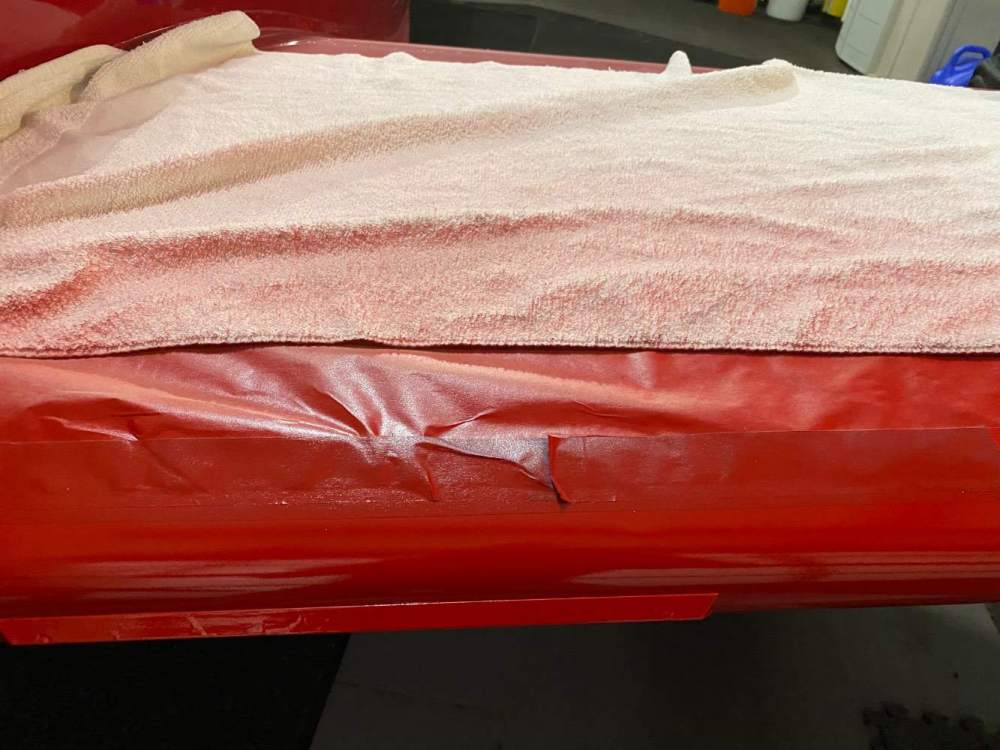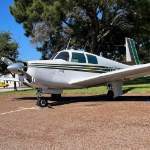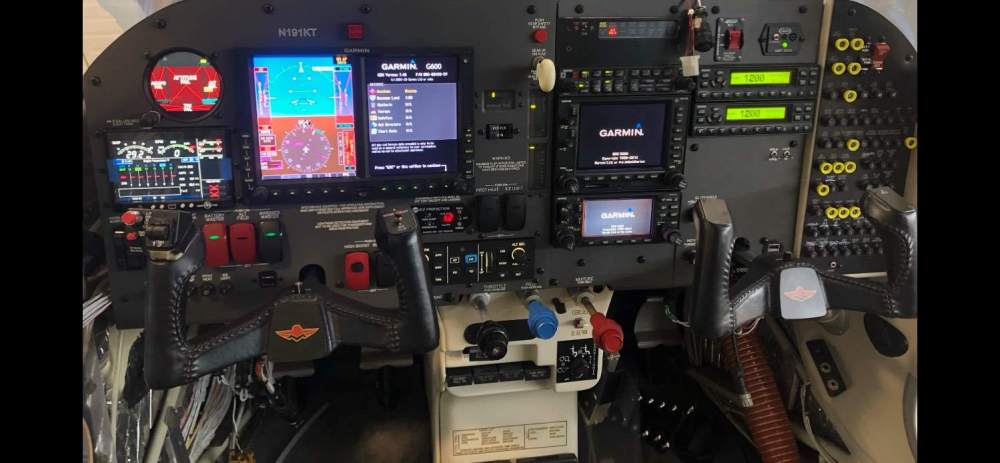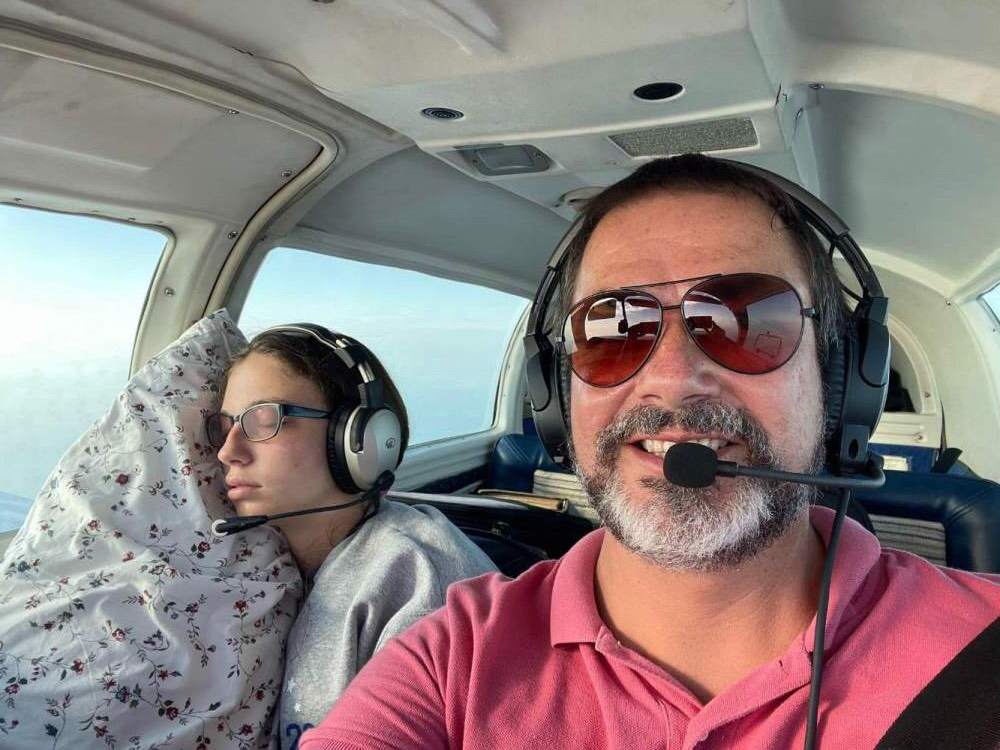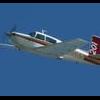Leaderboard
Popular Content
Showing content with the highest reputation on 09/03/2021 in all areas
-
Be careful. It is unlikely a physician would authorize her to fly with a bowel obstruction without an NG tube in place. ”It is important to remember that intestinal gas will expand 25% by volume at a cabin altitude of 8000 ft (2438 m). Post-abdominal surgery patients have a rela- tive ileus for several days, thereby putting them at risk for tearing of suture lines, bleeding, and perforation. In addition, stretching gastric or intestinal mucosa may result in hemorrhage from ulcer or suture sites. To be safe, air travel should be discouraged for 1-2 wk after the procedure. (The time could be reduced to 1 wk if the intestinal lumen was not opened.) Likewise, flight would be inadvisable for 24 h following a colonoscopy with a polypectomy procedure because of the large amount of gas still often present in the colon and the risk of unexpected bleeding from the polypectomy site. A patient with an asymptomatic partial small or large bowel obstruction may also be unable to accommodate the gastrointestinal gas expansion during a flight, and should be advised not to travel by air.” Source: https://www.asma.org/asma/media/asma/travel-publications/medguid.pdf4 points
-
4 points
-
3 points
-
3 points
-
3 points
-
I was offered the same option. I am not married and I have 3 airplanes...2 points
-
Did an acceptance flight today but found an issue with the nav lights and heading fail. When the nav lights were put on we got a heading fail flag. With the nav lights off everything was fine. They seem confident the problem is caused by the proximity of the nav light wires to the magnetometer. I could be wrong but that the extent of what I understood. The initial impressions are… the switch to EFIS is much more dramatic than I thought. My brain needs time to adjust to the new location and format of the information and needs to learn how to process it. That will come in a few hours experience. JPI EDM 900. Wow! So much better than the Moritz. Glad I got it. GI275… not much time to play with it yet but quite an amazing piece of equipment in such as small package. GFC500…. Again not much time to play with it. Review to follow. Gained 30# of useful load with removal of the vac, stby vac and all the other stuff. Debating if I need ForeFlight/iPad anymore. This panel has all the bases covered.2 points
-
Yeah airplane and hangar made it through IDA, minor damage to hangar, no damage at my house. Now to keep the generators running . I was worried about plane, couldn't fly it out mechanical issues . Hangar was almost in direct path center was about 10 to 15 miles west of hangar .2 points
-
If she really loved him she'd accept the airplane. The guy is in an abusive relationship and should get out right away. I wish I was kidding.2 points
-
Exactly what @ArtVandelay said. I had a new fuel pump put on last year and it sits right at redline, maybe just over. At full power in cruise it’s just barely below redline. Sounds like your mech adjusted the oil pressure, but you’ll definitely see higher oil pressure after start until the oil gets hot. Maybe not redline at idle, but maybe still noticeably high. It will be higher with greater than 1000 rpm too.2 points
-
1 point
-
2k urethane, stripped edges to bare metal, primed with metal etch primer which is made for adhesion to bare metal., had some rough edges, built up with building primer. Decided to blend, so we put a few coats on the metal and fanned it back, blending in, wet sanding buffing will polish later. Whites not bad, deciding if I want to do complete job on white or touch and blend. Major problem the job was done and it stayed tacky, some reason an issue with the reducer. It took another 10-12 hours to strip then prepare. Not for the faint of heart, unreasonable cost for a shop to do it.1 point
-
1 point
-
It occurred to me there is an issue unique to the 231 if you intend the new instrument to be primary for the engine gauges, that is, you would be removing the factory gauges in favor of the new instrument. The 231 is unique among the turbo Mooneys as far as I know, in that it has a Compressor Discharge Temperature redline limitation. The redline is 280 dF. The reason for the limitation is to prevent overly hot induction air, which would cause detonation. The 231 is unique because it is the only turbo Mooney, at least that I can think of, that comes from the factory without an intercooler. Where you would see CDT approach or exceed redline is usually during a long climb or at cruise in high altitudes where cooling is poor. The intercooler will drop the induction temperature by somewhere between 75 to 125 dF, making CDT and Induction Air Temperature essentially irrelevant, the IAT will be so low that there is virtually no danger of exceeding the 280 dF limit. Not sure, but for that reason I don't think the intercooler-certified aircraft such as the 252 and on up have either a CDT or an IAT redline. A 231 is required to have a CDT gauge that is certified, which means the redline has to be marked on it. This is true even if your particular aircraft has an aftermarket intercooler, because the CDT is part of the certification for the aircraft. One could probably go to a FSDO and get 337 approval to substitute an IAT readout for the CDT readout, but it is dubious whether they would allow a readout for induction air temperature to be removed altogether. To my point, if you intend to substitute an EIS of some kind as primary for your 231's instruments, either that EIS would need to be certified as primary for CDT and would be marked with the redline, or you would need to retain the factory CDT gauge. You should verify that the Garmin EIS can display CDT and is certified as primary for CDT. I raise the issue because I doubt it, most turbo aircraft are like the post-231 Mooneys, they don't have a CDT limitation because they were certified with at least one intercooler and therefore the instrument manufacturers don't put one in. The JPI 930 is certified for CDT. Other than the legal issue - that there needs to be an installed and primary CDT in the aircraft - induction air temperature is a non-issue if you have the intercooler. The IAT is never in danger of getting to the redline limit of 280 because the intercooler cools the induction air so well, but the requirement is nevertheless there.1 point
-
Yes, the change seemed to happen just after that.1 point
-
FWIW, my 2018 factory rebuilt IO-360-A3B6 came with a LW-15473 and fuel pressure is usually around 21 psig in cruise.1 point
-
FWIW, I talked to the principal engineer for the RSA5 and he said that the servo will work just fine with an inlet pressure of 75PSI. That doesn't help the folks with the angry engine monitors.1 point
-
We really need a another big player in avionics besides big G, but history shows BK often promises and rarely (never?) delivers. Honeywell is really successful is supplying great systems for Airliners and Business jets but, somehow that doesn't trickle down to Bendix-King. I understand, this is TruTrak that they bough couple of years ago... Reading the Q&A it seems like a capable and simple to install unit and for $5100, it includes everything you need. Would love to see install manual. Still, I wouldn't hold my breath waiting for one but it would be great if there was an "inexpensive" option to my unsupported Brittain PC/Acutrack systems.1 point
-
Give it 20 hours to break in. For those of us with engine monitors that flash warnings when the fuel pressure rises it’s annoying.1 point
-
For some reason somebody decided the spring needed to be stiffer. It seems it is the only spring available nowadays. The spring determines the fuel pressure of the mechanical pump. They all make 30+PSI.1 point
-
I moved an entire console and nose wheel well plus all systems from an 81 J into my 77 to delete the throttle quadrant. It was a tremendous amount of work. The black portion is a formed cover that is installed with pop rivets and removable with a bit of effort. You'll have to remove all of the knobs from the cables, loosen your engine control mounting nuts, etc to coax it out. You should drop the flap and trim indicators very carefully from below as well as the visible ends are delicate and brittle. Sent from my LM-V405 using Tapatalk1 point
-
It will be interesting how they will cover the M20U and V, but in Bendix King time, look for the completion sometime in 2043 on the J's1 point
-
Right about now, when it's about 50 degrees at altitude, I don't think that'd be much fun. Less so when the mercury drops some more.1 point
-
I would Wait for the engine to break in before adjusting rpm as long as its in the ball park. I try to resist demanding digital accuracy in an analog world:) Pete1 point
-
I think you’ll find iPad still useful for planning purposes. I assume you have Flightstream so you can upload flight plans, especially since your navigators don’t support airways very well. Even in flight, I changed flight plan on iPad, verify it’s correct before transferring to panel avionics.1 point
-
1 point
-
1 point
-
Switch. If it's a Bendix switch there is an AD 76-07-12 to check that it shuts off off. https://rgl.faa.gov/Regulatory_and_Guidance_Library/rgAD.nsf/AOCADSearch/C14960A415D956BD86256E520053A53E?OpenDocument1 point
-
I can’t tell you about the G3, but I have a 930 and all those readouts and more are displayed on the 930 both graphically and as a number. The 930 can also display CDT and differential temp (the difference between CDT and Induction Air Temp). Whether you have an intercooler or not, CDT is a required temp in the 231, and if you have an intercooler you need differential temp to use the adjustment table that comes with the intercooler, to make your power settings. I don’t use that table, but you need it anyway, I believe, to comply with the STC for the intercooler. The 930 fits very well on the pilot side, that is where mine is. That puts it in the pilot’s scan. I would not put it anywhere else. Here is a picture of it sitting just right of the six pack instruments. I wouldn’t put it anywhere else, it has saved my bacon sitting there instead of over on the co-pilot side. Sorry, I don’t have a pic of the right side panel, there was one in the albums but appears it was lost during the website conversion. That’s a little bit of the VSI just left of the 930, and a little bit of a GTN750Xi to the right. Ignore the %HP readout, the JPI is computing that as if the engine is operating ROP and it is not, it is LOP. Its at about 74% HP.1 point
-
Couldn’t agree more- new wiring is a big deal on these aging airframes.1 point
-
I said " i can pull up any international Metar/Taf " there are no international METARs/TAF through ADS/B I don't know on the GSR 56, but it provides both voice and text as well as worldwide weather at varying subscription levels. But at $10K, I can't justify it. https://buy.garmin.com/en-US/US/p/13270#overview1 point
-
It’s a french thing. They sent an “air police” to our jet when we told them we were unable to take the RNAV departure they thought we didn’t know how to program our FMS. Once he was aboard and saw we did not have a gps he lamented over the radio that we were correct and needed vectors. They just never had seen a 767 without a gps apparently. even some companies can be CB.1 point
-
And he had that awesome write-up of his goose strike over KAVP one night, IIRC. digging for the pics.... -dan1 point
-
A friend of mine conned the Air Force out of some strobes from an F16. The problem is they all run on 115VAC. You would need an inverter to make them go.1 point
-
1 point
-
No idea. Probably not too often. Anecdotally, I rarely see these things make it to court except when product mfrs are accused...1 point
-
1 point
-
1 point
-
Actually Scott is quite a funny guy, I wouldn't doubt he did well in humor class1 point
-
I saw that on FB, reminded me of an ad in Cycle News back in the 80’s…Headline read “You like sex? Then said so do I, the wife says it goes or the motorcycle goes…then detailed the bike for sale….. it was a current model with less than 1000 miles……1 point
-
1 point
-
If this is a FI Lycoming, they change the fuel pump so it goes above 30 psi, especially during idle, after break-in mine drop below red line. Unless it’s way higher, like above 32 psi I wouldn’t worry about it.1 point
-
1 point
-
One issue for Lycoming is getting a core with aftermarket components because the cannot reuse them. Lycoming will probably look the other way about a bunch of stuff if you exchange an IO-360-A3B6D for an A3B6 because they’d really like to retire the dual mag engines. All I can say is that my dealings with Air Power and Lycoming were great and the rebuilt engine is running strong at 250 hours, getting 12-14 hours to a quart of oil, and it doesn’t leak. Skip1 point
-
I don't think there is much difference. They both want you to run as much cylinder pressure as possible. In reality, keeping it below 440 CHT will probably limit you to 75% or so.1 point
-
Lycoming says 75% power because that's what they've always said, and if they change that guidance the lawyers will tear them apart for having given less than optimal guidance in the past. Busch has the advantage of being able to report on test data gathered using modern testing equipment and techniques, combined with the advantage of not being liable if someone breaks their engine because they misunderstood his advice. Sent from my Pixel 3a using Tapatalk1 point
-
1 point
-
I was at the forum at OSH. I thought the incident was described as well as could be. No one intended to have a midair. The mistake was wing getting in front of lead. Shit happens. The discussion was never intended to be a break down of the incident, but rather to address the things that led up to it, and what can be done better to prevent it. I think there was a purposefully confrontational nature presented by the poster above. You can't call someone a liar and expect not to get pushback. You also admittedly are biased. You said you were anti caravan and were not interested in changing your mind. As a somewhat experienced formation flyer in multiple airframes, I can 100% believe neither pilot knew there had been a collision. I know your partner thinks hitting an eagle at 300 knots is equivalent to hitting a rudder at 3 knots, but it isn't. Not only was I at the forum, but I was in the flight where the collision took place. A few elements ahead. One thing I can tell you is that it was bumpy. Very bumpy. I was flying wing on the right side of my lead. Not only did I never see the ground, I never saw my daughter sitting in the right seat. My eyes were on my lead 100% of the time. My right wing could have fallen off, and as long as the plane was flying normally, I never would have noticed. I thought the presentation was well done, addressed issues that may have led up to it, and ways to do it better. Formation flying is riskier than flying alone. Flying is riskier than driving. Driving is riskier than walking. We all have a level of risk we're willing to accept. Those of us that fly formation have accepted that risk, just as you have accepted the risk of flying instead of driving.1 point
-
So I went to the presentation and have some ruminations on the ruminations .. I learned a few tidbits: There wasn’t a lot of specifics about what happened. It was really, as titled, a lot of “rumination” regarding the Swiss cheese model of accident analysis. But certainly included a lot of ruminations about potential organizational contributions to the midair. These included things ranging from keeping sponsors happy to rapid growth to geographic spread of participants. There is video the midair! Have I missed this posted somewhere on the internet before? Apparently it is being shown at Mooney caravan clinics. I wished it was clearer and wonder if NTSB enhanced it at all would love to see it. (My observations - only watching video twice so I would defer to people who really analyzed it - is it was a very slow relative motion event, thus it didn’t change my mind about having a hard time believing unexpected wake turbulence was a principal cause of how the trailing pilot ended up in front of his lead.) The ppt briefing given pre flight (either printed or verbal, I could not tell which) was missing the page about blind calls. It was not mentioned in the presentation at all (something that seemed like a weird thing to omit), so I asked an open ended question in front of the audience about the accident reports suggesting that neither pilot knew they had a midair before landing and seeing the damage. The presenter (who was the lead pilot who’s wing was damaged) and his copilot had the opportunity to fully explain themselves to the floor. The response to my question: it was a low relative velocity event, so he did not feel the impact. He pointed to the midair that recently happened in Centennial Colorado as an example of not noticing either - possibly even suggesting this is just normal for a midair not to notice. (I think he must have had a mistaken impression that Swearingen pilot in that accident, given his cool calm badassery taxiing off the runway, didn’t notice that he had been in a midair. But I am pretty sure everything I read his he did notice something happened even if he didn’t have line of site on the colliding aircraft, and declared an emergency immediately after it happened, it’s just that he didn’t realize how badly he was damaged. And of course the other Cirrus pilot noticed because he pulled his chute.). After - in the interests of friendly dialog and accompanied by friends who participate in the caravan - I attempted to introduce myself to the presenter. Unfortunately, the conversation went south fast. Apparently, he has the mistaken impression that I am just a lifelong caravan critic that will never be happy with how this was handled. You can go back through my 10 years of MS posts, but before 2019 I frequently expressed interest in doing the caravan. My concerns with going were always personal logistical/timing ones, something Byron and I had hoped to one day overcome those and do the caravan with everyone. We have many friends that do the caravan and think it’s an important way of bringing the community together. We join the post caravan BBQ nearly every year In the N40 and have enjoyed the good times. Anyway, I expressed my concern that I learned some new facts here at the presentation that I hadn’t heard elsewhere. I got the caravan usual old response: you don’t participate in the caravan, if you had come to clinics we would have told you. Then I got accused of spreading rumors on the internet contrary to these secret facts I don’t have access to without coming to the clinics. Basically it was the same circular reasoning we see play out here on MS for the last 2 years. Trying to get back from the emotional defensiveness to the conversation, I said well I have a few specific questions and in answer to the questions I learned the following: the tail pilot did have the clinic training prior to participating in the caravan despite rumors to the contrary (this was double confirmed by two other caravan participants that were more friendly after the conversation.). the NTSB either did or didn’t interview both pilots I couldn’t really tell (it was presented more in the form of challenging question to explain how little I knew “do you even know if the NTSB talked to us?” “No, I’m curious did they?” “See you don’t even know that! How can you possibly have an informed opinion?!”) The Accident pilot insists with some passion that he did not feel the accident nor did he notice the damage to the wing until after he landed. Unfortunately he was not open to the suggestion that it’s odd or surprising that he didn’t notice - basically any question on this subject at all amounted to me calling him a liar and that I lacked the basic necessary understanding of a low momentum collision between two light aircraft traveling at a similar velocity if I even contemplated the problem. (As an aside, I have two engineering degrees, and worked on a certain spacecraft investigation that was crippled by its own internal organizational declarations about the energy involved in collision with foam that required an external independent evaluation before coming to grips with what happened). He stated he didn’t notice the wing damage until landing because after the near midair, he was joining up on the wing of another pilot, and his eyes were focused on that plane the whole time and so he never looked out his window at the damaged wing. He stated if he knew he had a compromised airplane he would definitely have landed, so there’s no way he would have continued on if he knew his wing was like this. My personal observations in reflecting on this story: Get-there-itis and adrenaline do all sorts of things to aeronautical decision making and memory that don’t make sense in retrospect. Unfortunately the ruminations didn’t include any thoughts about “how caravan flying can make you so tunnel visioned on following your lead pilot that you and your copilot don’t notice your wing has been bashed in either when it happens or for the next 10-30? minutes of flight to Oshkosh, and that’s a dangerous situational awareness problem too,” so we couldn’t really continue this conversation in any meaningful way after that. The presenter was very very adamant I come back online and relay what I learned. It seems a little odd me sharing my impressions of what he said, instead of him doing so here in his own words. Frankly, if the presenter or the caravan wants to share information, they know how to post in MooneySpace (and the caravan even has its own web page!). In fact, all these things have apparently been shared at caravan clinics, so any of the dozens of pilots who participated in those could chime in too (do they make you swear on a secret handshake not to comment or something?). The solution if you are concerned with internet rumors? Reply with something that dispels the rumor not just “that’s not what happened but you’ll have to trust me unless you spend your weekend at our formation clinic...” Personally I think the “only caravan people are entitled to the details” is a poor PR strategy to attract new participants to the caravan, and until they fix their organizational culture to value transparency and invite independent evaluation of incidents (rather than keeping it all in-house), I think they still have a potential safety problem that will come knocking on their door one day. The other thing I have been wondering since I left the forum - if one takes this narrative at face value and the pilots thought a near midair happened, combined with a pilot losing sight of his lead without making the appropriate blind calls... what should you do next? I mean this is all definitely arm chair quarterbacking now - we all can look back and wish we had done something differently - but I don’t think forming up and continuing in formation after that is necessarily the right thing to do. You now have a known safety problem with your formation. Perhaps breaking off, debriefing, and taking stock of your situation would be better. Curious, what’s the caravan near miss procedure? I guess I have to go to a clinic to find out...1 point
-
It’s likely that the pilot’s report doesn’t actually cover what happened…. He may have arrived on scene a few seconds after the plane did…. It would be cool if he were here… and could recall how many bounces it takes to pile drive the nose wheel into the pavement… Three bounces is the average number for a prop strike… One bounce is enough to power up and go around… Two bounces usually happens when you are a touch slow on the decision making… Three bounces means you didn’t decide… and the wild ride has already begun… Short runways like KBID…. Make late decisions more painful… And the desire to force the landing more powerful… https://flightaware.com/live/flight/N58066 Recovering this plane from that spot is going to be interesting…. I wasn’t there, so… This is the type of damage caused by improper speed control on a short runway… PP thoughts only… Best regards, -a-1 point








